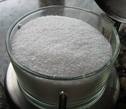
London: Salt-rich diets could be the reason why many children are getting fatter, University of London researchers say.
In a study of data on 1,600 children, they found that children eating a salty diet tended to drink more, including more fattening, sugary soft drinks.
They reported in journal Hypertension that halving the average daily salt intake of six grams a day could cut 250 calories a week from a child’s diet. They said the the food industry should reduce salt content in products.
One in five children in the UK is overweight and there are fears that this will contribute to a rising trend in adult obesity, heart disease and stroke in years to come.
Eating products high in salt tends to make people thirsty and it is known that in adults, a salt-laden diet tends to increase the amount of sugary soft drinks consumed.
This is the first study to see if the same effect was found in children.
The team from St George’s, University of London, looked at data from the National Diet and Nutrition Survey, conducted in 1997.
They used a sample of 1,600 four to 18-year-olds who had all had their salt and fluid intake measured precisely.
They found that children eating a lower-salt diet drank less fluid and estimated that one gram of salt cut from a daily diet would reduce fluid intake by 100 grams per day.
Approximately a quarter of those 100 grams would be sugary soft drinks, they predicted.
The researchers estimated that if children cut their salt intake by half – an average reduction of three grams a day – there would be a decrease of approximately two sugar-sweetened soft drinks per week per child.
That, in turn, would decrease each child’s calorie intake by almost 250 calories per week.
They urged parents to check the salt content of their children’s meals and manufacturers to find ways to reduce this content.
They said reductions in the salt content of 10% or 20% cannot be detected by human salt taste receptors and do not cause any “technological or safety problems”.
Professor Graham McGregor, one of the paper’s authors and the chairman of Consensus Action on Salt and Health, said that while some manufacturers had acted to reduce salt levels in bread and cereals – the main sources of salt for children – there was still plenty left for the industry to do.
“Unfortunately some food specifically targeted at children has to be laced with salt otherwise it would be inedible, because it is made from mechanically-recovered meat,” he said.
“The salt levels in some of these products have been brought virtually up to the level of sea water.
“This is evidence of another, hidden way in which eating too much salt may harm the health of children and the industry needs to do a lot more.”
Dr Myron Weinberger, from the Indiana University Medical Center, wrote that reductions in salt and soft drink consumption in children, coupled with an increase in physical activity, could help reduce the “scourge of cardiovascular disease” in western society.
A spokesman for the British Heart Foundation said that better food labelling would help parents to choose healthier foods for their families.
“When children regularly swill down salty foods with sugary, calorie-laden soft drinks, it can mean double trouble for their future heart health.
“This report is yet more proof that children must be supported to make healthier food choices to avoid becoming obese or increasing their blood pressure.”




